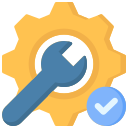Building a mobile app starts with defining goals and understanding the target audience. Key steps include creating a wireframe and selecting core functionalities. It’s important to conduct market research and consider user feedback. Forming the right development team greatly impacts the app’s success. Developing a Minimum Viable Product (MVP) allows for iterative improvements. Selecting a suitable platform and monetization model is also crucial. Finally, emphasizing user interface (UI) and user experience (UX) design ensures an engaging app. And this process is totally different from No-code app builder.

Let's talk
Schedule a discovery call with our team
Introduction to Mobile App Development
Understanding the Basics of App Creation
Mobile app development starts with a solid understanding of the app ecosystem and technologies involved. It encompasses the journey from ideation to launch, involving steps like planning, design, development, testing, and deployment. Today’s app market demands not just functional but also visually appealing and user-friendly apps. This requires developers to be proficient in programming languages and design principles.
App development can be done for various platforms, primarily iOS and Android. Each platform has its specific development environment, tools, and guidelines. Developers must choose the right tools and technologies that align with their app’s purpose and audience. This decision is crucial in shaping the app’s development journey.
The Importance of Clear Objectives in App Development
Setting clear objectives is fundamental in the app development process. It involves identifying the purpose of the app, its core functionalities, and the problems it aims to solve. Having well-defined objectives guides the development process, ensuring that every feature and design element aligns with the end goal. This clarity helps in avoiding unnecessary features, saving time creating the app and resources.
Objectives also play a vital role in determining the app’s target audience and market positioning. They set the foundation for creating a unique value proposition, which is essential in a competitive app market. Without clear objectives, an app risks becoming directionless and failing to resonate with its intended users.
Let's talk
Schedule a discovery call with our team
Initial Planning and Research
Defining Your App’s Goals and Objectives
Defining goals and objectives is the first step in app development. This includes outlining what the app seeks to achieve and its intended functionality. Goals should be specific, measurable, achievable, relevant, and time-bound (SMART). This stage involves brainstorming sessions, discussions with stakeholders, and aligning the app’s purpose with business or personal objectives.
Setting objectives also involves determining the key performance indicators (KPIs) for the app. These metrics will help in tracking the app’s success and guiding future improvements. Clear objectives provide a roadmap for the entire development process, ensuring that all efforts are focused and aligned.
Conducting Thorough Market Research
Market research is crucial in understanding the competitive landscape and user preferences. It involves analyzing existing apps, identifying market gaps, and understanding user needs. This research helps in making informed decisions about the app’s features, design, and overall strategy. It also provides insights into potential challenges and opportunities in the market.
Effective market research includes analyzing competitor strategies, user reviews, and market trends. Gathering data on user demographics, behavior patterns, and preferences is also essential. This information helps in tailoring the app to meet user expectations and increase its chances of success in the market. Because most likely you will need custom android app development and also iOS development.
Understanding and Defining Your Target Audience
Understanding the target audience is key to developing a successful app. It involves identifying who the app is for and what their specific needs and preferences are. Creating user personas can be a helpful way to visualize the target audience. Personas represent typical users and include details like demographics, motivations, behavior patterns, and goals.
Defining the target audience helps in customizing the app’s features, design, and user experience to meet their expectations. It also guides marketing strategies and promotional efforts. Knowing the audience well leads to a more user-centric app, which is more likely to engage and retain users.
Let's talk
Schedule a discovery call with our team
Design and Development Strategies
Deciding on Key App Features
Deciding on key features is a critical step in app development. This involves determining what functionalities the app will offer and how they align with the app’s goals. It’s essential to prioritize features based on their importance and feasibility. Starting with a minimum viable product (MVP) approach is often advisable, focusing on core features first.
Feature selection should be driven by user needs and market research. Avoiding feature creep, where unnecessary features are added, is crucial. Each feature should add value to the user experience and contribute to achieving the app’s objectives. Balancing innovation with practicality is key in this process.
Creating a Wireframe and UI/UX Design
Creating a wireframe is the next step, which involves outlining the app’s structure and user flow. Wireframes are basic blueprints that show the layout and elements of each app screen. They are instrumental in visualizing the app’s functionality and user experience (UX). Wireframes serve as a foundation for the detailed UI/UX design.
The UI/UX design phase focuses on the app’s visual and interactive aspects. It involves designing the interface, choosing color schemes, and creating an intuitive user experience. A well-designed UI/UX is crucial for user engagement and satisfaction. This phase often requires iterations based on user feedback and usability testing.
Choosing the Right Development Method
Choosing the right development method is essential for efficient app creation. Options include native development, which offers optimized performance for specific platforms, and cross-platform development, which allows for broader reach with a single codebase. Each method has its advantages and considerations in terms of cost, time, and resources.
The decision should be based on the app’s objectives, target audience, and budget. Native development is ideal for apps requiring high performance and access to platform-specific features. Cross-platform development, on the other hand, is cost-effective for apps with a wider audience and less complex functionalities.
Technical Aspects and Prototyping
Developing Technical Specifications
Developing technical specifications is a vital phase in app development. This process involves detailing the technical requirements, including the choice of programming languages, frameworks, and third-party integrations. These specifications serve as a blueprint, guiding developers in building the app’s architecture and functionalities. A well-documented specification ensures consistency and efficiency in the development process.
Attention to database design, server setup, and API integrations is essential at this stage. Developers must also consider scalability and security features, ensuring the app can handle growth and protect user data. This phase lays the groundwork for smooth and effective app development.
Creating a Minimum Viable Product (MVP)
An MVP approach focuses on developing an app with essential features to satisfy early users and gather valuable feedback. This strategy allows developers to test the app’s core concept in the real world with minimal resources. An MVP helps in validating the app idea and understanding user needs better, reducing the risk of costly changes later.
Iterative development based on user feedback is crucial with an MVP. This approach allows for incremental improvements, ensuring the app evolves in line with user expectations and market demands. It’s a cost-effective way to refine and enhance the app over time.
For ease of use and reduced cost, we recommend cross platform app development where you use react native or flutter. And that way, the developers will write the app code just once, and then generate the ios and android code, thus building a mobile app.
Get in touch with our mobile development company and lets get started today developing your mobile app.
Feedback Analysis and Iterative Improvement
Feedback analysis is critical for refining and improving the app. Gathering user feedback through surveys, user testing sessions, and app analytics provides insights into user behavior and preferences. This feedback is instrumental in identifying areas for improvement and new features to enhance the user experience.
Iterative improvement involves regularly updating the app based on this feedback. It’s a cycle of implementing changes, gathering user responses, and making further adjustments. This continuous process ensures the app remains relevant, user-friendly, and competitive in the ever-changing app landscape.
Let's talk
Schedule a discovery call with our team
Finalizing and Launching Your App
Implementing Quality Assurance Practices
Quality assurance (QA) is an integral part of finalizing the app. This involves rigorous testing to identify and fix bugs, ensuring the app’s functionality, performance, and user interface meet high standards. QA practices include unit testing, integration testing, and user acceptance testing. A thorough QA process helps in delivering a reliable and polished app.
Automated testing tools and continuous integration systems can enhance the QA process, providing regular and efficient testing throughout the development cycle. Ensuring a bug-free and well-functioning app is crucial for a successful launch and user satisfaction.
Setting Measurable Milestones and Deployment
Setting measurable milestones is important for tracking the app’s progress towards launch. These milestones include completing key development stages, finalizing design elements, and achieving QA targets. They help in keeping the project on schedule and managing team efforts effectively.
Deployment involves preparing the app for public release, which includes finalizing code, optimizing performance, and ensuring compliance with app store guidelines. A well-planned deployment strategy is essential for a smooth launch, minimizing last-minute hurdles and technical issues.
App Store Submission and Monetization Strategies
Submitting the app to app stores is a critical step in the launch process. This involves meeting specific criteria set by platforms like Apple’s App Store and Google Play Store, including design standards, privacy policies, and technical requirements. A well-prepared submission increases the chances of acceptance and a successful launch.
Monetization strategies, such as in-app purchases, subscriptions, or ads, should be finalized before launch. Choosing the right monetization model is key to generating revenue while maintaining a positive user experience. A thoughtful approach to monetization can significantly impact the app’s financial success.
Let's talk
Schedule a discovery call with our team
Post-Launch Strategies
Maintaining and Updating Your App
Post-launch, maintaining and updating the app is crucial for its longevity. Regular updates, including new features, bug fixes, and performance enhancements, keep the app relevant and engaging. Maintenance also involves monitoring app performance, addressing technical issues, and ensuring compatibility with new device versions and operating systems.
Proactive and ongoing maintenance helps in retaining users and improving app ratings. It demonstrates a commitment to quality and responsiveness to user needs, which are key factors in an app’s sustained success.
Marketing and User Engagement Tactics
Effective marketing and user engagement tactics are essential for the app’s visibility and growth. Marketing strategies include app store optimization (ASO), social media marketing, and targeted advertising. Engaging users through regular updates, push notifications, and personalized content can also enhance user retention and loyalty.
Understanding user behavior and preferences, and tailoring marketing efforts accordingly, is key. Analytics and user feedback provide valuable insights for refining marketing strategies and improving user engagement, driving the app’s growth and popularity.
Hiring a mobile app development agency
If you want to hire an app development agency then you need to look for agencies with proven track record and published apps. Try to look for experience rather than mombo jambo. For example sitemile has 12 years of experience developing mobile apps.
Let's talk
Schedule a discovery call with our team
Conclusion: Ensuring Long-Term Success
Key Takeaways for Aspiring App Developers
For aspiring app developers, understanding the comprehensive process of app development is crucial. From initial planning to post-launch strategies, each step requires careful consideration and execution. Focusing on user needs, continuously improving the app, and staying adaptable are key to long-term success.
Developing a mobile app is a dynamic and ongoing journey. Staying informed about market trends, user expectations, and technological advancements is essential. With dedication, adaptability, and a user-centric approach, developers can create successful and enduring mobile apps.
Staying Adaptable and Responsive to Market Trends
Staying adaptable and responsive to market trends is vital in the rapidly evolving app industry. Developers must be ready to embrace new technologies, adapt to changing user preferences, and innovate continuously. This adaptability is crucial for keeping the app relevant and competitive.
Regular market analysis, user feedback, and technology monitoring are essential practices. They enable developers to anticipate changes, seize opportunities, and mitigate challenges. In the fast-paced world of mobile apps, agility and foresight are key to thriving and achieving long-term success.
FAQS
Can I build a mobile app by myself?
Yes, you can build a mobile app by yourself, especially if you have some basic knowledge in programming and app design. Numerous tools and platforms are available that simplify the app development process, making it accessible to individuals. However, creating a more complex app might require learning advanced coding skills, understanding app design principles, and investing significant time and effort. The feasibility of building an app solo also depends on the app’s complexity and the developer’s dedication to learning and problem-solving.
What do I need to build a mobile app?
To build a mobile app, you need a clear concept, design and development skills, and an understanding of the platform you’re developing for, like iOS or Android. Key requirements include a development environment (like Xcode for iOS or Android Studio for Android), knowledge of programming languages (such as Swift for iOS or Kotlin for Android), and access to app development tools and libraries. Additionally, a strong grasp of user interface and experience design, testing and debugging processes, and possibly server-side development skills are essential.
How do apps make money?
Apps make money through various monetization strategies, including in-app purchases, subscription models, advertising, freemium models, and selling merchandise or services. In-app purchases allow users to buy additional features or content within the app. Subscription models offer access to content or services for a recurring fee. Advertising generates revenue through sponsored content or ads within the app. Freemium models offer a free app with the option to pay for premium features. Some apps also facilitate the sale of physical goods or services.
Is it cheaper to build an app or website?
The cost of building an app compared to a website depends on various factors like complexity, functionality, and design requirements. Generally, app development can be more expensive due to the need for specialized skills, multiple platform versions (iOS and Android), and ongoing maintenance. Websites might be cheaper to develop, especially if they are static or use standard web technologies. However, dynamic or highly interactive websites can also be costly. The decision should be based on the specific needs and goals of the project.
Ready to hire your own mobile app developer today ? Lets get in touch and work together.
Let's talk
Schedule a discovery call with our team








